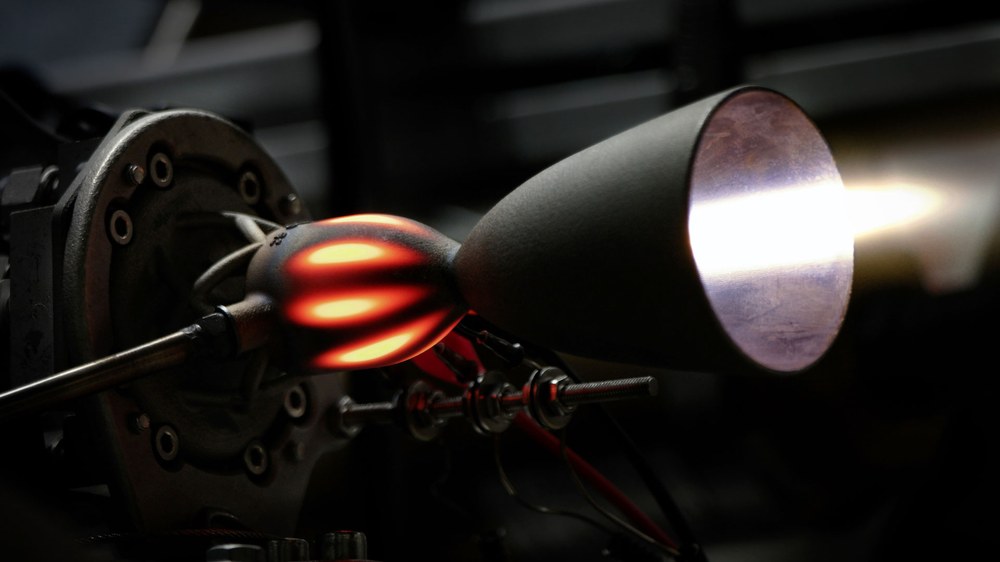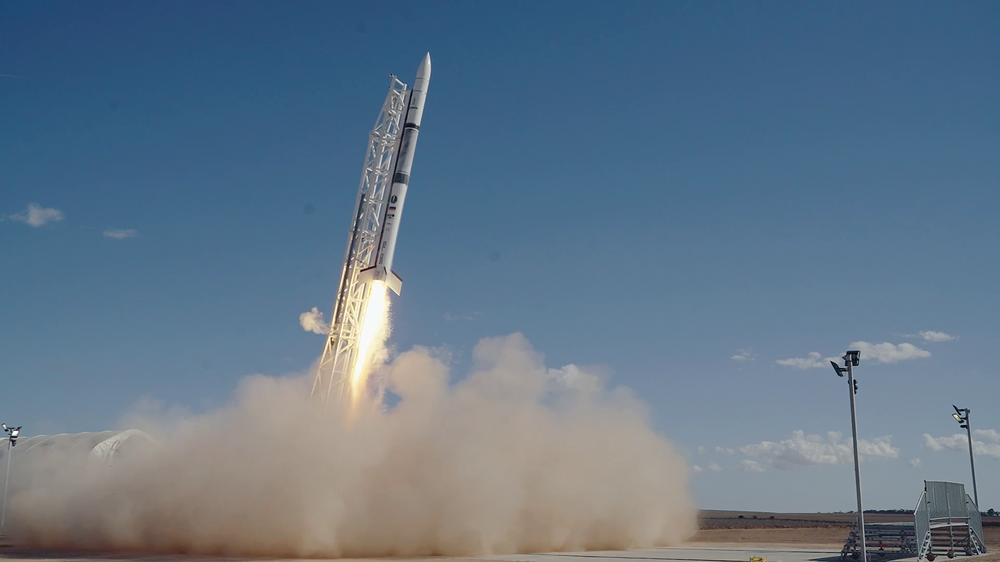Clean engines for future space propulsion systems


- From the research and development of green propellants to their application in space propulsion systems, the DLR Institute of Space Propulsion covers the entire portfolio.
- Novel propellant combinations for spaceflight and beyond are researched, developed and tested at the M11 test facility complex and the physical-chemical laboratory at M3.
- The DLR spin-offs HyImpulse Technologies and InSpacePropulsion Technologies demonstrate the application of their technological developments.
- Focus: Spaceflight, technology development, start-ups
An increasingly complex world, the protection of the environment and the rapid increase in space activities require sustainability in space transport, space missions and in the space industry. The reusability of rocket propulsion systems and the optimisation of production processes have been the focus so far. The basis for the development of innovative and sustainable technologies is research, and this begins at the DLR Institute of Space Propulsion with the right composition of rocket propellants. Powerful and easy to store were previously the requirements that propellants for propulsion to or in space had to fulfil. That is no longer everything. A propellant should also be cheap, easy to handle and sustainable. To this end, the DLR Institute of Space Propulsion is pooling its expertise to make spaceflight more sustainable and greener – from propellant development to application.
Developing greener and more sustainable propellants in the laboratory
In the Physical-Chemical Laboratory of the DLR Institute's Chemical Propellant Technology department, all steps of the pre-development of novel green fuels are carried out – from chemical synthesis and characterisation to combustion tests of selected fuel combinations. For example, the DLR team has developed the two alternative fuels "HIP_11" (Hypergolic Ionic Propellant developed at M11) and HyNOx.
HyNOx is a two-component fuel and consists of nitrous oxide (N2O) and ethane (C2H6). The components are readily available worldwide. HIP_11 also consists of two components: Concentrated hydrogen peroxide is a powerful and easy-to-handle oxidiser. The second component is a salt that has a very low melting temperature and is therefore liquid at room temperature. As soon as this salt comes into contact with hydrogen peroxide, the substances react with each other and ignition occurs. These propellant combinations are characterised by comparable performance to conventional storable propellants such as hydrazine. At the same time, they are much easier to handle and pose a significantly reduced risk to people and the environment.
Based on this research, Dr. Lukas Werling and Felix Lauck founded the DLR start-up InSpacePropulsion Technologies GmbH. The more sustainable propellant combinations HyNOx and HIP_11, as well as the associated propulsion technologies for various applications such as satellites, landers and capsules, are now being launched into space and onto the market at the same time. The technologies will be used in the first missions at the end of 2025. These flights will demonstrate the functionality, robustness and performance of the propulsion systems developed in-house. The start-up recently successfully completed a pre-seed financing round totalling 2 million euros. The money will be used to finalise the first products so that they are ready for their missions into space.
Alternative to liquid fuels – the hybrid fuel combination
The M11 test facility complex is an all-rounder: both liquid and hybrid propellants for rocket or satellite propulsion systems can be researched and developed at different test positions. A hybrid propellant combination is when the oxidiser is liquid or gaseous and the fuel is in solid form. Oxidisers can be oxygen, nitrous oxide or hydrogen peroxide, for example, while paraffin – i.e. pure candle wax – is currently used as the fuel. This fuel combination is safe to operate, efficient and has less impact on the environment.

Video: First successful launch of the SR75 rocket – DLR spin-off HyImpulse
Your consent to the storage of data ('cookies') is required for the playback of this video on Youtube.com. You can view and change your current data storage settings at any time under privacy.
HyImpulse
The DLR spin-off HyImpulse Technologies GmbH began developing a hybrid-powered microlauncher back in 2018, relying entirely on candle wax. The specially developed SR-75 sounding rocket was successfully launched from the Australian launch site in Koonibba on 3 May 2024, proving that the technology also works on a large scale. Work on the next launch of the SR-75 in the coming months is already in full swing. At the same time, development of the SL1 orbital rocket is taking place at the Neuenstadt, Ottobrunn and Glasgow sites for the planned maiden flight in 2026.
Related news:
Contact
Dr. Dominic Freudenmann
Dr. Christoph Kirchberger
